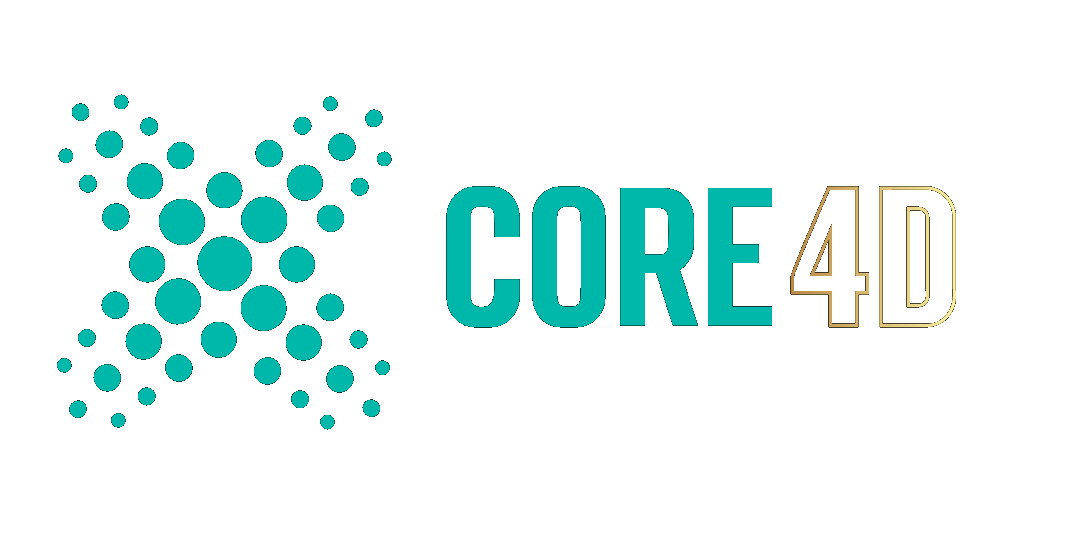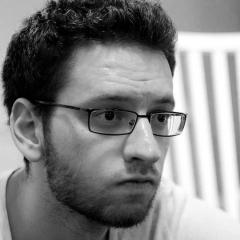Leaderboard
Popular Content
Showing content with the highest reputation since 08/18/2025 in all areas
-
I feared this day would come. This is really sad to hear, but not unexpected if I'm honest. I'm not good at this stuff, but I still want to try: Thank you to everyone who has been running this forum in some form or another, be it via moderation or paying the servers out of their own pockets. Thank you for the invaluable help on the many questions over the years, as dumb as they sometimes maybe were. I would NOT be in the same position as I am right now if it wasn't for this forum. Not even close. And I am sure I am not the only one with this experience. This forum always was a positive energy in my life and I am sad to see it go. I came back here regularly even when I switched to Blender for two years, that should tell you everything you need to know about this community. The internet as we know it is unfortunately changing, and has been for years. And it is not for the better. Corporate got it's greedy grip around it at this point, and way too tightly. Everything is centralized now. Giant tech companies are able to build userbases with free access to their services while bleeding out competition, until they suddenly remove free tiers and / or increase pricing after years and years of running on a loss. This will happen to all these AI tools too, the moment investor money dries up (and it's already drying up, after the devastating news about AI investments recently). Comparatively small ventures like this forum are simply not able to do that, and I fear the time of forums in general is just over. They were already down years ago, and then Discord arrived started kicking the corpse. How ANYONE can think Discord is a legit replacement for old-style forums really has no idea what they're getting into. Just to make it clear, I think creating a Core4D Discord just to keep in contact with each other is a really cool idea that I support. So I'm not specifically talking about the people here with this post. But 10-15 years from now people will mourn "the great loss of information" because Discord WILL shut down / restrict access at some point and all that knowledge collected on these Discord servers will vanish. Not to mention the many people we will simply "lose in translation", especially probably many of the old guard how simply can't be bothered to switch to yet another platform. Discord servers can't really be found via Search Engines either. I'm not even sure Discord is even going to make it another 10 years, judging by how much it has already been enshittifed in the last year. As far as I know, they're prepping to go public. We all know what that means in the long term.4 points
-
I must admit I have almost no motivation to join some Discord after forum closes down, it simply doesn't have the same allure or structure I enjoyed so much. For me personally, this was more than just a forum. Tried my best to help and am really sorry to see it go away. Time to move on - good luck everyone!4 points
-
I'm shocked ! Is anyone interested in creating a Discord or other cheaper even free type of forum and move the content there ? I never knew the monthly or annual expenses of this forum. It could be nice if we had a donation bar on the top, like wikipedea or other startups have. It seems to have a psychological drive on people. Did we ever have that ?4 points
-
I am so sad to read this. Thank you to Igor, Hrvoje, Nigel and everyone else who was involved over the years in this forum 😟 I had been a silent reader for years and gained so much knowledge from this forum (especially from many posts from @Cerbera). I hope there is a way to preserve the forum as an archive, as others have already expressed as their wish too. However, I fully understand the cost factor and that you need to pull the plug at some point. I joined @HappyPolygon's Discord server (thanks for setting this up), but I also much prefer traditional forums when it comes to proper discussions and learning material. Slack, Discord, Teams... they're all geared towards real-time collaboration and discussion, but are no replacements for traditional forums. Call me old-fashioned, but I dislike how the internet has evolved in the communcation aspect. I guess I still have time this month to go through the forums and save out some valuable knowledge. So sad.2 points
-
Ah very sad times indeed.. Im incredibly greatful to this place. The c4dcafe was a place i spent so much time in.. it's a shame that so much knowledge will evaporate.. but as many have said, hardly surprising. everyone wants instant chat answers.. discords, slacks etc.. Managing communities has only become more and more difficult i think in recent years, with bots, lazy people, people posting answers from ai.. spam.. etc.. It is very sad to see what the internet has become.. it had so much potential.. Well much love to you all, and thanks to everyone who tried to keep this place going. It was a Sisyphusian task. --- I did a quick search for forum hosting options and found this place.. my god the retro vibes just got to me.. Maybe it can be a place the c4d cafe / corec4d refugees.. the last c4d forum 😄 https://retroc4d.freeforums.net/ maybe it's a bit too pink.. ---2 points
-
Damn... these are really sad news. The way i see it Maxon should have helped a lot more to keep this site working since it is a major source of knowledge, problem solving and data sharing community. This is essencial to keep a modern software competitive and with a strong community. without a strong and active community, software becomes less popular and then In a way i also felt somehow a bit disconnected (my fault). I used to come here a lot more often and helped whoever i could , but now i have less time and i usually solve my c4d issues in other ways. Still this the best place to find a lot of professionals, news and stuff around c4d. It helped me a lot and in way made me a better professional so i dedicate all my thanks to team that created and sustain this site. I'll try to keep contributing the way i can to help the c4d community , with knowledge, tools or other stuff, so i'll be around if anyone need help. thanks2 points
-
I wonder how Igor could manage the burden of this server. Or wasn't he alone ? I don't even know why he left (not as admin). Did the forum belong to him in the first place at all ? My awareness of who's what is close to 0. I don't even remember how I got here.2 points
-
Please do not use this forum brand name and graphics for your own personal discord channel that has nothing to do with it. Same for any content that is not yours specifically, this is copyright infringement - thank you!2 points
-
I guess we're getting old 🙂 . But it was nice to be part of this era. Join to great community, meet great people, perhaps may help sometimes somebody, learn a lot of new things.2 points
-
Truly terrible news, if not entirely unexpected. I'm over on the discord servers now too, but like @hrvoje, this doesn't hold quite the same level of appeal. Still needs must, so off I go... Thank you to the Core, and the Cafe before it for decades of brilliant help and advice ! You will be missed ! CBR2 points
-
I have a discord with around a thousand memebers, most are maya / blender users with a mixture of hobbyists and professionals, from the likes of adobe, frame store , autodesk etc etc. I’ve not made a C4d portion yet because there was no need for it , but happy for you guys to join and ill create a sub category for you2 points
-
Looks pretty slick. AI agent, advanced brush for vegetation, AI PBR materials, IES control, etc.2 points
-
Dear members and friends With great sadness in our heart we are announcing the closing of the forum. After more than 20 years (formerly also as C4D Cafe) we reached the end of the road. The reason is that we simply can't cover expenses anymore. Forum and whole platform, including creation of Youtube training and plugins was relying on ads and volunteer based subscription. We removed ads on your request and also disabled direct advertising. The huge rise in memberships simply did not increase the subscription count, 98% of members are not subscribed and have never subscribed to support the community. We are not able to pay for dedicated server, additional security and spam defense, management of huge database of scenes and posts, moderation, creation of plugins and Youtube training content. Unfortunately we were also not able to make a deal with potential sponsor and simply reached the end of the line. Forum will go offline on October 1st. Massive thanks to all the subscribed members and ones who helped with donations and their time, endlessly trying to keep the original C4D community alive, you guys know who you are. Times are changing and we have to move on. All the subscribed members will get cancellation of subscription at the end of the month. Good luck to you all! With Regards Rob & CORE4D staff1 point
-
Blimey, what sad news, just logged in to get my latest C4D issue solved at the core as I usually do and find its all going away. Dunno what I will do now, the cafe and lately core has held my hand through my entire 3d journey and its not an underestimation to say it was my main source of learning in the early days. I think I watched all of Nigels tutorials as well as many others. Ive had hundreds of problems solved and often with multiple solutions from various super knowledgable and highly skilled members. Its always been my goto spot to stop me pulling my hair out when all my own stumbling efforts have failed. I also learned so much following other peoples issues and downloading and disecting all the different files as well as trying to solve a few myself. Its been a lot like having my own tech support that I could rely on when all else failed, 3D isn’t my primary gig so Im no expert and I hit the wall a lot, I dont really earn much from it but was happy to pay a fiver for the subs, 60 bucks a year aint much in the grand scheme of things. I will take this opportunity to offer a huge thank you to all the members that have helped me out over the years with problems both complex and also very simple. I was always surprised at how super skilled and talented people were happy to take time out from there own projects and work to help with what probably seemed quite simple issues to them, when they could be off building wonderful creations for themselves. Any billionaire C4D users out there to save the day ? Was great while it lasted, thanks everyone.1 point
-
@Jeff H1 I think that does mean that if you create something you can't using Open Source Initiative which is organization. Because they sell you free product just like Blender Market doing. Blender isn't free because of it. It use money from selling other people plugins. So basically from users that use it. Paradox. They think like this - "you can use software for free but most probably you will buy some plugins from Blender Market like simple bevel node which is not included in our node system by default because we know that you will like to use it". Generally most of the great Blender features are paid. I thought the same about Maxon One reserved nodes especially from Rocket Lasso. But I'm very happy that they at least didn't do the same as "open" foundations. Anyway most of the materials are still reserved to Maxon One license. In my opinion it doesn't mean that you can't create scripts for free. Just do that in your own initiative. Nobody can prohibit you for share your own images, scripts created in software for free. You can always sell scripts or nodes using Gumroad for $1 😉1 point
-
Amazing geoblob, thanks for taking time in doing a recording, Magic! Jacobute Amazing geoblob, thanks for taking time in doing a recording, Magic! Jacobute1 point
-
https://support.maxon.net/hc/en-us/articles/8658038724124-Cinema-4D-2026-0-September-10-2025 Bugfix Release1 point
-
1 point
-
I haven't been very active this last months ... or rather years. Nor on the forum, nor 3D wise. I am still using R20 for some 3D printing projects, but am more and more focusing on CAD for that matter. Not having a GPU (old laptop here), and with all the 3D render engines being subscription based, my 3D modeling and rendering activities have slowly come to an end. Every now and again I log on to this site ... The news I just read didn't come as a surprise, but still feels like a punch in the face (or stomach). Sad news indeed. Sad to see all that knowledge provided by so many people over so many years disappear. Bye bye, C4DCafe! Bye bye, Core4D! Thank you to all whom contributed to the forum and community. The site will fade away, but not the memories.1 point
-
We really should try saving this knowledge somehow. If this site goes down without some kind of backup of this insane amount of knowledge and workarounds that piled up over the years it's going to tear a giant hole into the community. Honestly, just saving the Threads + a shitty "low res" (1080p?) compressed version of every image would suffice. We don't need uncompressed PNGs and stuff.1 point
-
This is the only real C4D forum, there is nothing like it. The amount of data just from me is pretty big, I managed to spam the forum in hundreds of Mb : ) Trying to collect all the scene files so it is not lost but can see a giant backup file is being generated @Corebot I know I already asked privately, but indulge me, why not sell the forum, maybe there would be interested parties...?1 point
-
C4Dzone is still going but I’m not sure the English part of the forum is that active1 point
-
Revenue from ads is significantly lower since Google was driving the ad unit value down in past years. It simply is not viable anymore as it was. To get something out of it one would have to spam the whole site with endless ads and in return get around 15% of running costs. Plus, everyone hated ads. We were open to collaboration with company which benefited greatly from this forum but our attempts to initiate contact and potentially preserve this rare community failed, there was no response to our query, they probably get thousands of mails daily. At the end, it was really unsettling to have few members bearing the cost of it all, often felt like exploiting their enthusiasm and love for C4D.1 point
-
I setup a Discord server as fast as I could. Feel free to join in to keep in touch with the rest of our members. You can also invite other people you trust. https://discord.gg/RCDPYvhR1 point
-
While I've moved on from C4D to Houdini over the last few years, I've continued to drop in here on occasion to for old times sake - and I'm sad to hear this news, but not really surprised. There are always many more takers than givers, and those who give can only give so much. When I was using Cinema - which I did for over 20 years - I always found this community to be a very friendly and helpful place, and a great source of knowledge. So, thanks to all the 'givers'. You know who you are. Your contributions were generous and appreciated gifts.1 point
-
Thank you to Nigel for starting the first incarnation of this forum years ago. Thank you to Igor and the others who on and off assisted and kept it running thereafter. Thank you to Hrvoje for helping out with great insights, answers and supportive training all the way back from the fun Vertex Pusher days to today, your calm and helpful manner really helped demystify C4D. When the forum goes I hope this won't be the last we'll ever see a video from you. Maybe the interest isn't there, but if you ever felt the need you could always record a video and Maxon could just pop it on their official Youtube channel. Anyone who watched it would be more informed after. Thank you to all the contributors to this forum, including some who haven't posted in this thread and may not - Mash's smart obervations, comments from the regulars, all the usual gang. Thank you to the Maxon staff who chipped in, including Noseman a few times, and even David McGavran. Things are what they are and I appreciate the time they took to add comments, even though some obviously wish the assistance went further. Thank you to the Maxon staff who pushed C4D development all these years, kind of interesting this forum is wrapping up just as C4D finally shrugs off the teething problems of its decade of core rewriting and enters the period of finally adding those long awaited new features. This was a very calm and friendly forum, even when the occasional thread flared up over the handful of small disagreements, most of which funnily enough were about whether Maxon was doing the right thing or not. All that goes into the past. Interesting to observe that C4D outlived Modo and Softimage, avoided the brick wall of development that Lightwave hit, and is now a far bigger player than before. The discussion of whatever C4D 2026 offers will be probably a bit muted and melancholy, but end of an era, this forum has commented on the evolution of C4D release by release since all the way back to 8.5 or 9 I think. I will keep an eye on the Discord thread but there was always something orderly and understandable about forum postings, the other social media discussion options always feel a bit messier and noisier. But like Hrvoje said it is what it is. Most forums disappear eventually but this one was always more useful, friendlier and enjoyable than most.1 point
-
1 point
-
Certainly ! https://discord.gg/wtbBftuQeg I’ve not been as active lately due to working on a Toy project, but now that’s finished I’ll be back there. I run it with a friend of mine who’s an ex University Maya lecturer , and fellow industry artist.1 point
-
Sorry to hear that guys. Learned a lot in C4D throughout the years. I believe this is the only donation/subscription service I subscribed to for more than 2 years (?) ? Though admittedly I'm using C4D less and less these days especially that even Maya Indie/Houdini Indie/Blender is much more appealing. Still, most of my 3D knowledge come from C4D and I'm always grateful for that. @Corebot That said, is it possible to download users post? I'd like to save mine and store. Would be fun, personally, to look at through the years.1 point
-
I second.. a discord would be nice especially with people like Hrvoje, Cerbera and others always dropping tasty bits of knowledge.1 point
-
extremely sad! 😭 I guess it's an end of an era. It was great meeting all of you and engaging with this community! If any of you want to still stay in contact I frequent the scene nodes discord, cinema4d discord, arnold render discords... HappyPolygon and Hrvoje thanks for everything! Corebot, be proud that you managed to stick it out for so long in an era where social media dominates the community engagement on the internet. You actually managed to last longer than CG Society forums and that place was bustling back in the day! 20+ years is a long time and many platforms and businesses barely last that long. So you did well 🙂1 point
-
Sorry to hear that, i helped few times when i could. these days everyone is expecting freebies except when it comes to their own time and resources...1 point
-
Hi. I'm looking for someone who has experience working with CAD models. (I can show you how if you don't) I need someone who can rearrange the parts under a material based hierarchy like in the image below. It would also be great if you can rig parts of the model like doors etc. to open and close. This isn't a one of job. I receive lots of STEP files every month so this will be an ongoing need of mine for the right person. I will of course need you to sign an NDA. You'll find my contact info here www.lightroom3d.com Regards. Cian.1 point
-
1 point
-
Well after a little experimentation I clicked on the View>Frame Default and it went back to normal… One of those little glitches I think? @ Hrvoje It was nothing to do with reverse orbit in the preferences since that was switched off, but thanks for the suggestion.1 point
-
you don't have enough geometry for the curvature you're trying to achieve in the cushion so it's causing shading issues. EDIT: I moved the camera at an extreme angle so you can see how there isn't enough geometry to make good curvature. Subdivide the geometry... use a Subdivision Surface or use a Redshift object tag (in the tag: Geometry override / Tessellation)1 point
-
Well I have been working away hard at this and this is where I have got to - I think it's an improvement and getting there 🙂 Peg's Mansion Flythrough HD v01.mp41 point
-
The cookie-scene is such a flex, and it just continues flexing... o_O1 point
-
If the VFX sub on Reddit is anything to go by, some dudes entire 5 person concept art team got replaced with a midjourney subscription lol, I really don’t think it’s too far into the future that certain roles start going in that direction .1 point
-
0 points












